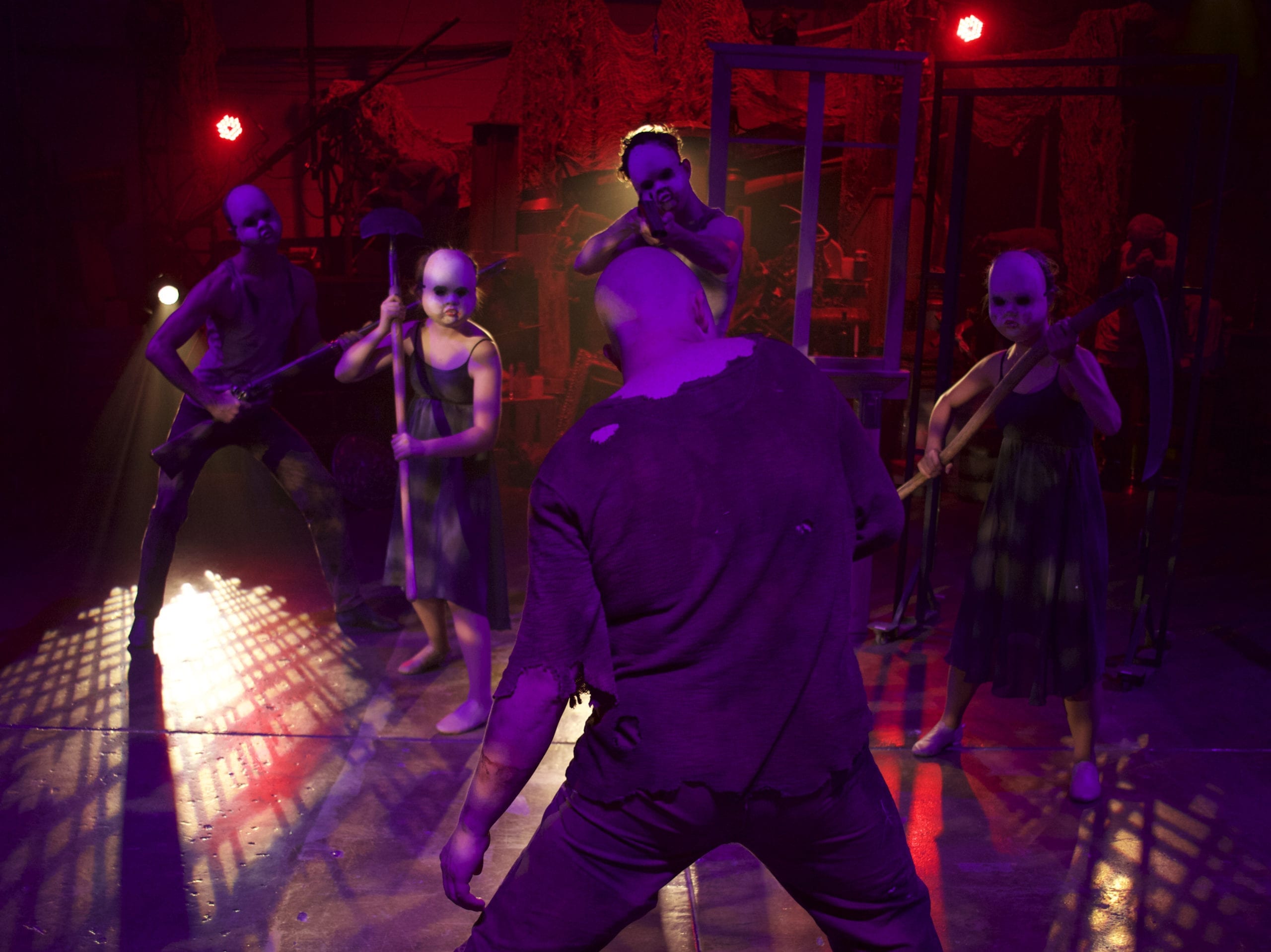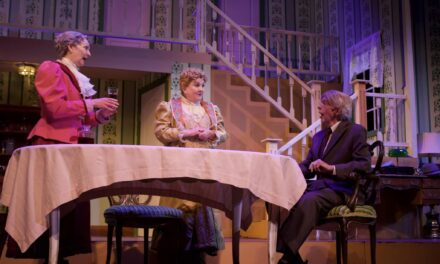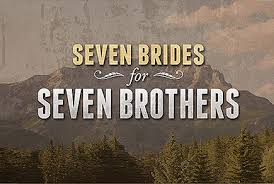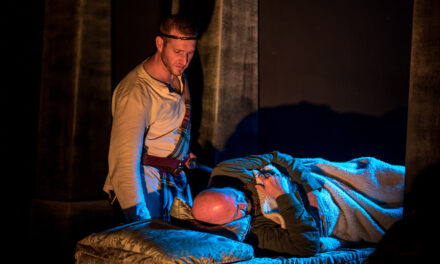SALT LAKE CITY — Sackerson, a new Utah theatre company, presents an all new horror theatrical experience in time for the Halloween season. Set in an industrial warehouse, Bride of Frankenstein brings to life the 1935 classic horror film of the same name, using theatre and dance. The innovative and experimental piece, directed by Christopher Clark, uses theatre, dance, and the full audio from the film (with actors lip syncing their roles) to bring the story to the stage. The story is of the classic Frankenstein tale, where two doctors, Dr. Henry Frankenstein (Alex Ungerman) and Dr. Septimus Pretorius (Bob Nelson), create life from assembling dead bodies. In this tale, the object is to create a female companion for the already created Monster (Kris Paries). While this is not an easy task, kidnappings, murders, and haunting circumstances occur.
Most of the acting in this performance was quite impressive. Lip syncing is a difficult medium, as it can be hard to precisely match the movements of the mouth to sound that is not your own, plus the exact memorization of when these sounds occur. While it was clear that a couple of the actors struggled with this task, most accomplished it well, able to embody the character and make it truly appear that the sound was actually coming from them. The two standout actors most skillful at this were Maddy Forsyth as Minnie and Heather Murdock as Mary Shelly and the Bride. These two performers were most captivating to watch as they were completely believable as their characters and their reactions were genuine. This is also true of Paries as the Monster. In particular, his movements and mannerisms are what brought his character into being. It was exciting to see the journey the Monster takes throughout the show as he learns to speak and find love, showing moments of softness and innocence. I specifically enjoyed the moving, strong, and honest chemistry between Paries and Shawn Francis Saunders as the Hermit.

Background left to right: Ames Bell, McKenna Chugg, Jonathan Rose, and Katie Shepherd. Foreground: Kris Paries.
The design elements in this production are what truly make Bride of Frankenstein effective. The costume and makeup designs (by Peter Terry and Bekah Wilbur, respectively) are superb. Both contributed to the eerie atmosphere and caused the characters to come to life, especially those that were creations of the Doctor. I particularly enjoyed the dead characters wearing nylons over their heads and the various bands placed around parts of the body, (used most on the Bride), making their bodies look as though they had been pieced together. This is also true of the stitching on the Monster’s head, which appeared extremely life-like. Set designer Daniel Whiting skillfully created a set and images onstage that were impeccable at setting the mood. The most notable of these visuals was the operating scene with the bed/coffin while the doctors are attempting to make the bride come alive, a scene that replicated the mood of an old horror film. These visuals and the mood that is created is intensified by Jaron Hermansen’s unnerving lighting design. All of these design elements come together seamlessly to create images (especially at the very end of the play) that are truly striking.
While the idea to use the original audio from the Bride of Frankenstein film was intriguing, the conception of the idea was not as appealing. The largest flaw this production faced was simply that the words the actors were supposedly producing were hard to hear. The mixing of bad acoustics from the warehouse setting and the use of an old recording caused much of the audio to become muffled. This made the production difficult to pay attention to at times, and some of the plot was lost on me. I found myself straining to understand the words, potentially not giving enough focus to other elements and not allowing myself to become completely engrossed in the mysterious atmosphere being created.
I will say that I do not think the concept of using original audio for Bride of Frankenstein worked as well as the creators and audience alike were hoping that it would. While there were complications, I am also not sure I truly see the appeal of this medium after viewing the production. I felt the actors were limited in their roles, especially when they could not be heard, and were not able to fully use the talent that they would have otherwise. Even so, I applaud those behind the creation of this piece. I love seeing new and innovative theatre in Utah. Taking risks is an important part in the creation of experimental and exciting theatre and usually holds value—as I believe it does in Bride of Frankenstein.
While I have pointed out weaknesses in Bride of Frankenstein, I would still encourage people to attend. There is much to enjoy in this production, especially for horror fans. Bride of Frankenstein may possibly be too frightening for very young children, though it is suitable for all other members of the family. Whether you love the original film or not, Bride of Frankenstein is certainly a worthwhile activity that provides a nice taste of the Halloween season.







